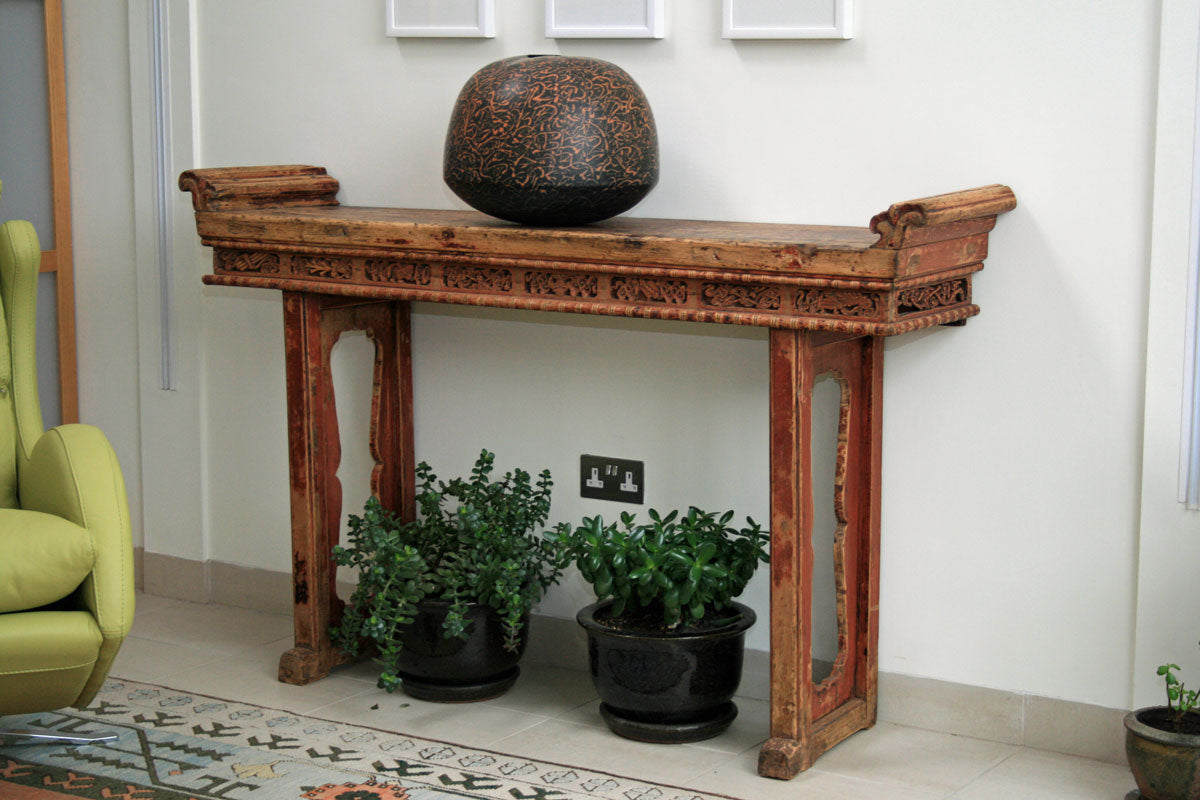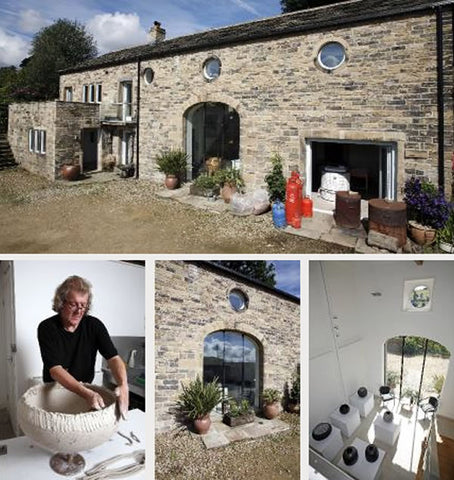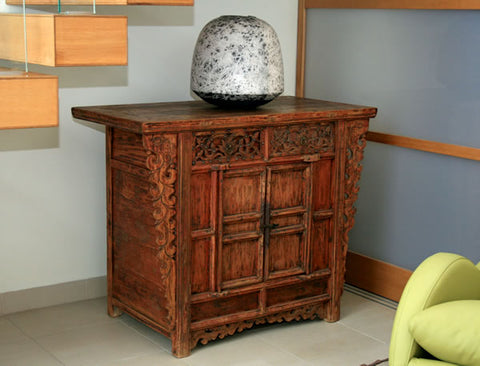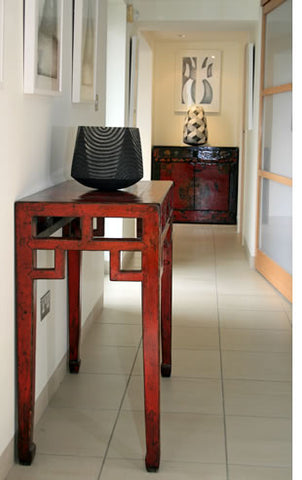
Raku and antiques in the home of ceramicist David Roberts

Recently we were lucky enough to visit the Yorkshire home of renowned ceramicist David Roberts, after he bought several pieces from our collection of Chinese antiques.
David is considered one of the most significant ceramic artists working in Europe today, with an international reputation as a leading practitioner in Raku ceramics. Raku is a pottery technique for small vessels which originated in the tea ceremonies of late sixteenth-century Japan. David is acknowledged as responsible for the introduction and promotion of modern, large scale Raku in Europe. A book by Lynn Green, ‘Painting with Smoke’, is devoted to his technique and his work is represented in public and private collections throughout the world.
As you can imagine, we were thrilled when David got in touch to discuss the purchase of antique furniture which could be used to display his work.
David lives in a beautiful stone barn in Holmfirth which he converted himself and which acts as both a home, studio and gallery space. As it’s in a conservation area, he was very limited as to what he could do with the exterior, which retains a traditional feel in old Yorkshire stone. However, once you step inside, it’s like entering a different world. The interior space is light and contemporary and employs clever use of Japanese-style sliding screens to compartmentalise areas and create rooms within rooms. The interior style of the house chimes beautifully with the Japanese heritage of David’s Raku pottery.
The Chinese antiques David chose act as a perfect foil to the delicacy of his ceramic art. Below you can see the beautiful Mongolian altar table with its intricate carving around the apron, designed to resemble bamboo. The table would originally have been used for offerings to ancestors, with the distinctive raised ‘flanges’ at each end of the table top denoting its religious use, but now makes a perfect display platform for David’s work.

The beautiful carved cabinet purchased by David has a long history. Made from elm and at least 200 years old, it is a lovely example of the furniture produced in Shaanxi province in north central China, where the ancient Chinese capital of Xian is located. The ornate carvings on the two drawers, apron and on the spandrels that taper down to the feet, are very distinctive of furniture from that region.

The final two pieces chosen for David’s home were the beautiful and surprisingly modern-looking red lacquer console on the left; and the stunning painted temple cabinet on the right.
|
|
|
The console originates from Shanxi province, and has been refinished in a rich, distressed red lacquer. Almost art deco in style, it works beautifully in the bright, contemporary space and draws the eye down to the final antique that David bought from us – the brightly decorated cabinet that fits snugly into an alcove at the end of the hallway. This piece is fron Gansu and still has its old paintings showing flowers around a central good luck symbol, as well as three bats – also symbolising good fortune.
David’s home is a perfect demonstration of how Oriental antiques can complement a contemporary home. I’m sure you’ll agree that the pared down Japanese aesthetic of the interior beautifully showcases both his ceramic art and the antique furniture on which it is displayed.







Leave a comment